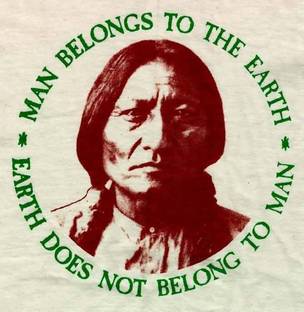|
J. William T. "Bill" Youngs, The Fair and the Falls: Spokane’s Expo ’74: Transforming an American Environment, Chapter Thirteen
|
"Trees inside the USA Pavilion" courtesy of the Washington State Archives
|
Chapter Thirteen: The Environmental Debate
|
SummaryAlthough the fair's theme was timely, it also proved controversial -- much more so than the promoters had anticipated. Traditionally enemies, businessmen and conservationists had difficulty seeing eye to eye on what the message of Expo should be. The fair eventually developed its own brand of environmentalism, walking a middle line between utilitarian and aesthetic views of nature. Spokane's small Yippie community brought a unique viewpoint to the environmental debate, and in the process promoted a counterfair.
|
Author reads from the Text
"Diverse currents of contemporary thinking"
"Certainly, the businessmen at the core of the Expo '74 Corporation lacked the purity of vision of a John Muir. They brought to their work a mixture of idealism and self-interest, and they recognized that when they sought exhibitors for the exposition, they were operating in a world where ecology attracted both condemnation and admiration. In mounting an environmental fair, they would have to discover a path that reflected their own mixed feelings about environmentalism as well as the diverse currents of contemporary thinking in the world at large about ecology."
"A major step forward"
"Speaking on behalf of Expo, David Peterson -- who faced many hostile crowds -- counseled environmentalists to look at the big picture: 'I don't even see what the discussion is about. Let's say we put on the worst commercial fair -- we're not going to -- but let's say we put on the worst commercial fair ever done. Let's say you're embarrassed by it. Let's say that you are so embarrassed that you won't take your friends down to see it. It's six months. When it's over, you have a fifty-acre park in the middle of a river on the most gorgeous site in America. Today it's got pigeon crap, two levels of railroad tracks, warehouses, hobos, and old laundries. You wouldn't put up with six months of embarrassment? Go out of town for six months, whatever. When you come back, isn't this a major step forward environmentally?'"
"A kind of cleansing"
"Even while taking an optimistic approach to ecology, Spokane was burdened with -- and stimulated by -- the necessity of living up to its theme. Other possible world's fair subjects, such as 'communication,' would have simply required Expo to assemble a variety of exhibits. Who would have thought to ask whether Spokane itself was a model of communications excellence? But the ecological theme brought with it the expectation that Spokane would undergo a kind of cleansing to establish its own 'fresh new environment.' This is precisely what the city tried to do before the fair."
"So we decided to start protesting."
"'There was a big model of it [Expo] down in the library,' [Yippie leader] Rik Smith recalled. After the voters turned down the Expo bond, and the city adopted the B & O tax, 'A lot of people were just saying, you know, we're going to have this thrown in our faces whether we want it or not.' There were a lot of tee-shirts around showing an Expo symbol with dollar signs through it and sporting the slogan 'Exploit '74.' 'We figured the whole world was going to be there. We didn't like the fact that a lot of the big corporations (we felt) were using it as cover to say how great they were for the environment, and so we decided it was basically a big business cover. So we decided we were going to start protesting.'"

